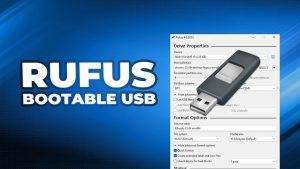
is a free and open-source utility for Windows that allows you to format and create bootable USB flash drives. It’s widely used for tasks like creating installation media for Windows or Linux, flashing firmware, or running low-level utilities. Rufus is particularly known for being lightweight, fast, and effective.
Key Features:
-
Bootable USB creation: Create bootable drives from ISO files for operating systems such as Windows, Linux, FreeDOS, etc.
-
UEFI and Legacy BIOS support: Works with both newer and older systems.
-
Support for multiple file systems: FAT32, NTFS, UDF, exFAT, etc.
-
Portable version available: No installation required.
Typical Use Cases:
-
Creating a bootable USB for Windows installation.
-
Creating a live USB for Linux distributions.
-
Flashing BIOS or other firmware from DOS.
-
Running low-level utilities like partition managers or disk check tools.
How to Use Rufus:
-
Download Rufus from the official site: https://rufus.ie
-
Insert your USB drive.
-
Launch Rufus (no installation needed).
-
Select your USB drive.
-
Choose the ISO file or desired bootable image.
-
Configure settings (partition scheme, file system, etc.).
-
Click Start.